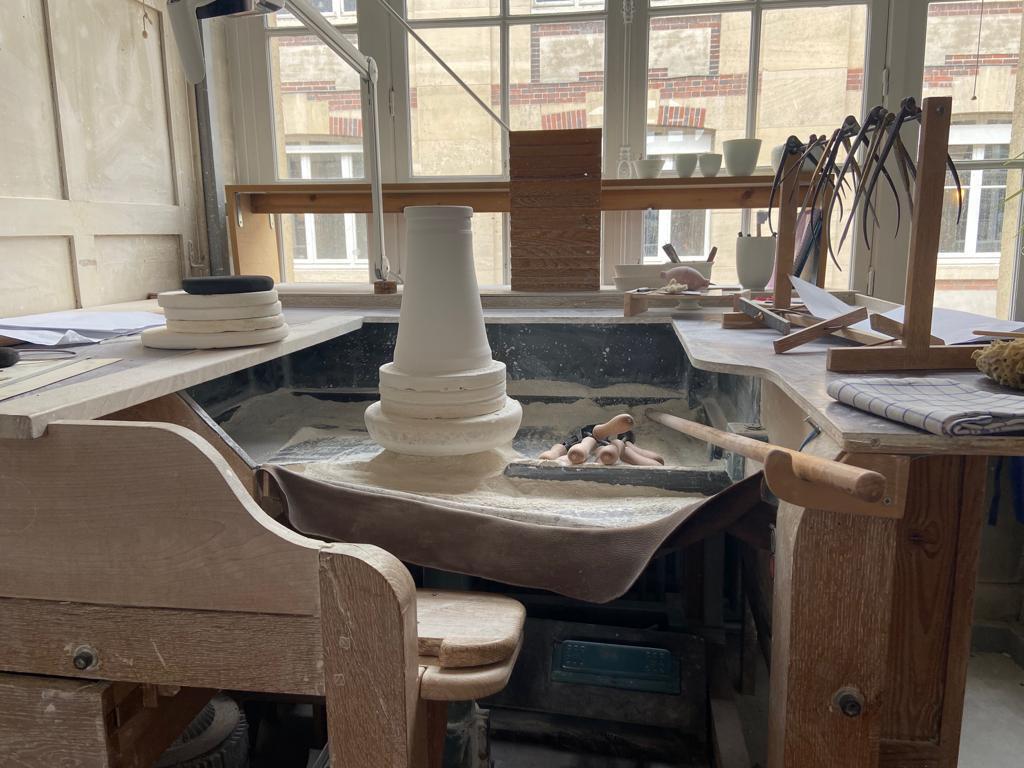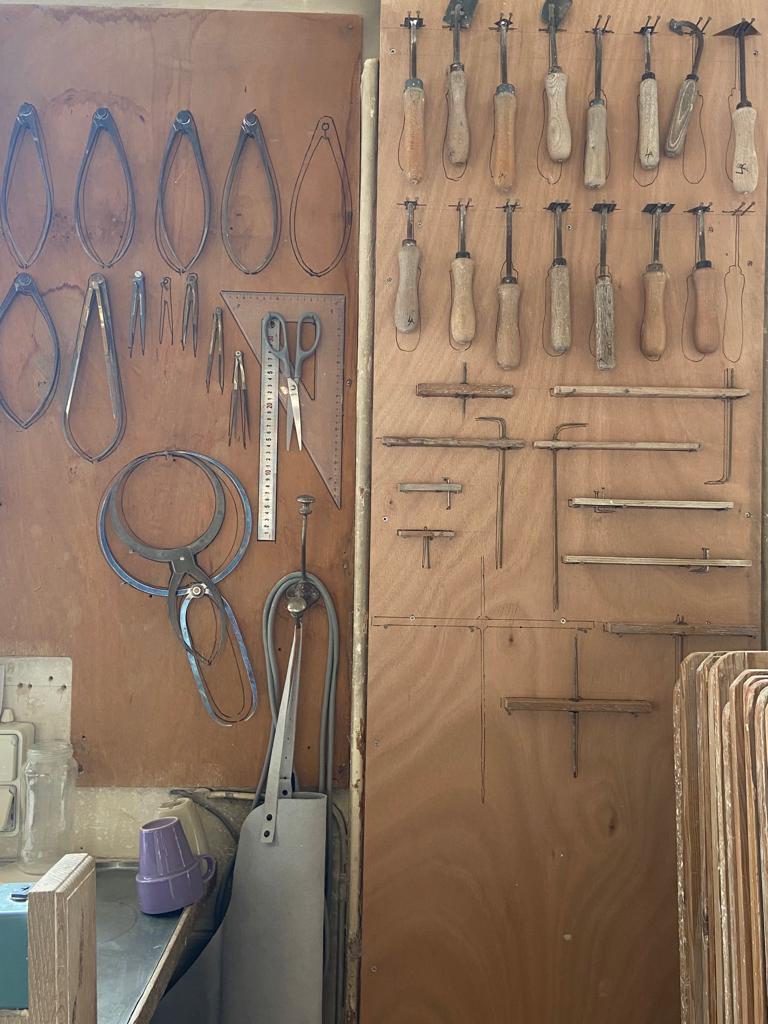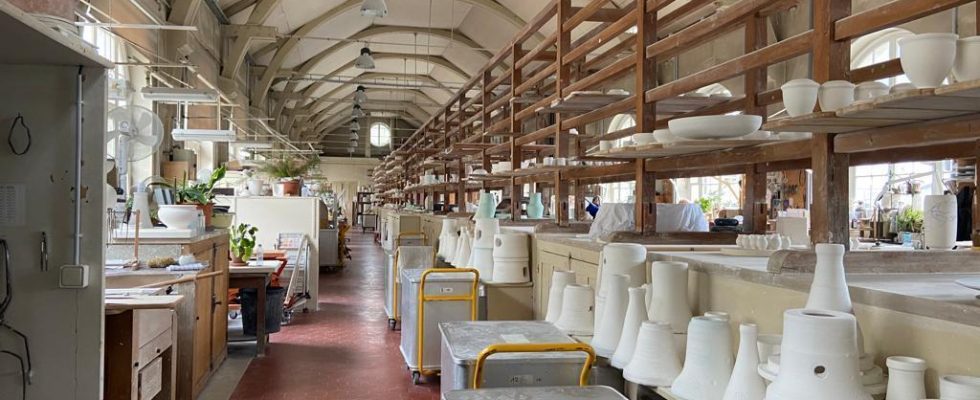The series on the professions of the Manufacture de Sèvres is dedicated to its art technicians and its historic workshops. Thirty crafts are distributed in workshops, in order to tame porcelain, a material that has a memory. Today, meeting with Elsa Favier, hollow turner. Turning is the technique of shaping an object from a ball of dough on a potter’s wheel. It allows to quickly obtain handmade shapes, much more regular and light.
Creation is very important. This allows you to stimulate yourself, to stimulate many things in the brain. But here, at Sèvres, we don’t really take part in creation because we are art technicians, so we produce, we don’t create. But there is a little bit of creation, when we think about how to proceed to make a piece. How to manage to find a logic, a working method to manage to finalize a drawing?
Elsa Favier, art technician and woodturner at the Manufacture of Sevres.
“ A factory where we make everything by hand. It’s rare and it’s a heritage. I try to keep this heritage alive. We don’t have the same techniques, the same time too, maybe before they worked more in a day. Before, it was a profession only reserved for men. Today, I’m the second woman filmmaker, so that’s changing. Break times are also times when we can breathe, take a step back from our piece to see it in another way. »
Elsa Favier trained as an architect and worked for six years in an architecture firm before arriving at the Manufacture de Sèvres. She was already filming for her leisure, but she discovered the demands of the Manufacture during her professional retraining at the age of 29. For two years, she followed a work-study program at the end of which she passed the crafts certificate (BMA), ceramics option, then the art technician competition, the key to a career in the Manufacture de Sèvres and the work on exceptional pieces.
“ I would never have considered leaving my job for less than excellent training. I was really looking for excellence, detail, perfection down to the millimetre. The material is very important to me, but the realization, how to manage to understand, how to build an object in the end ? Because we start from a drawing to come up with a shape, a piece. So there is an idea of construction. »

Porcelain has the reputation of being a very capricious but also soft material. Handling it with care and caution is necessary at every step.
“ As porcelain is a very capricious material with shape memory, we work the piece with a very thick wall and then the second phase is turning, where we dig into the mass all the details of the piece, the curves and the counter curves of the thickness. This is where we come to the exact drawing that we have in front of us. »

“ At the last stage, we take a caliper to point the thickness on a part and transfer it to the drawing and see if it is identical. It has to be identical down to the millimetre. At the end, when we have finished our work on the board, there is a series of pieces, the number requested, from 10 to 60 which are all the same size, the same diameters, etc. but made by hand. We still spend some time with the piece, which can be more or less long and more or less difficult. We give of our person to arrive at this room and that it is born. »
Find all the episodes of 100% Création on : Apple Podcast Castbox Deezer Google Podcast Podcast Addict Spotify or any other platform via the RSS feed.
